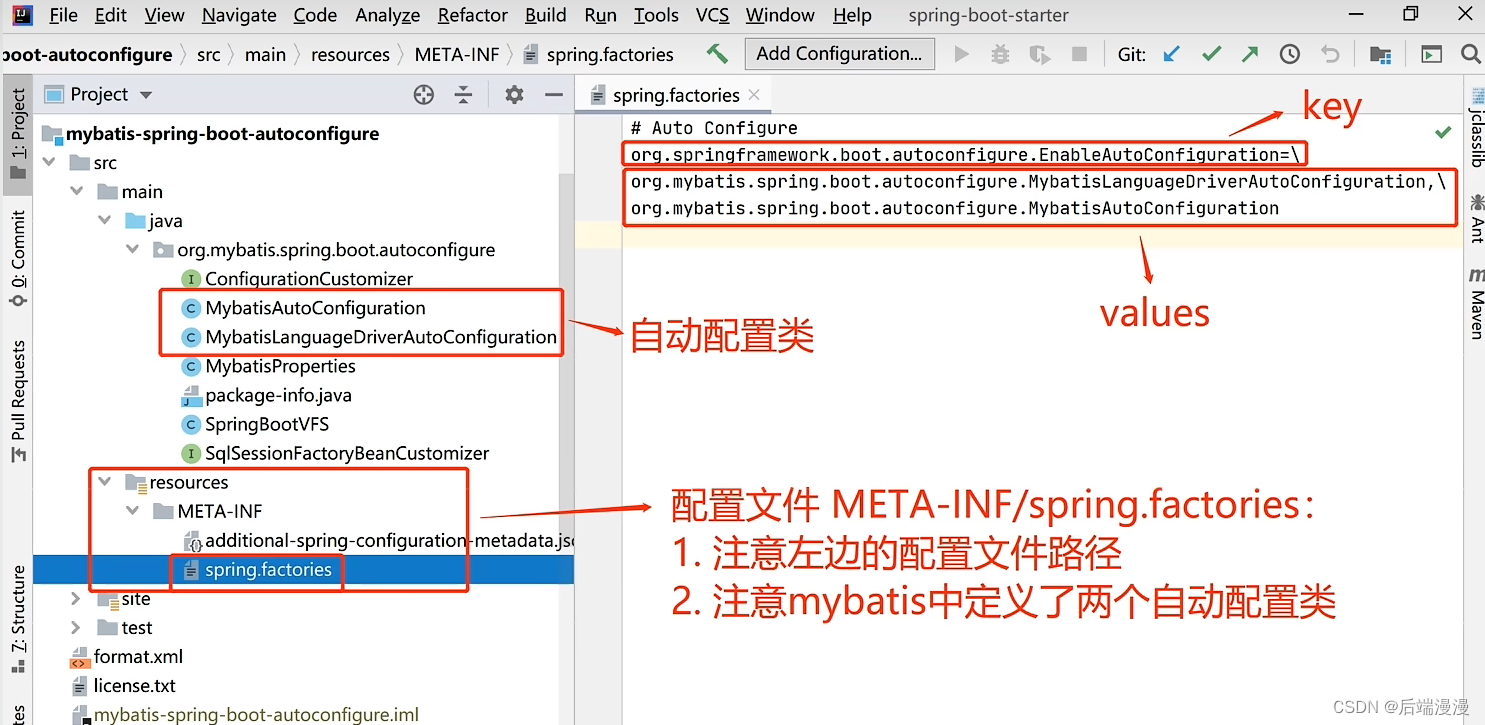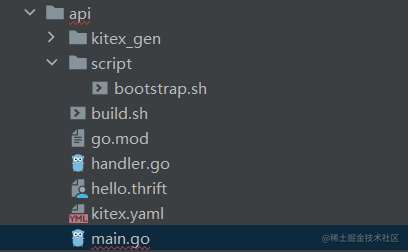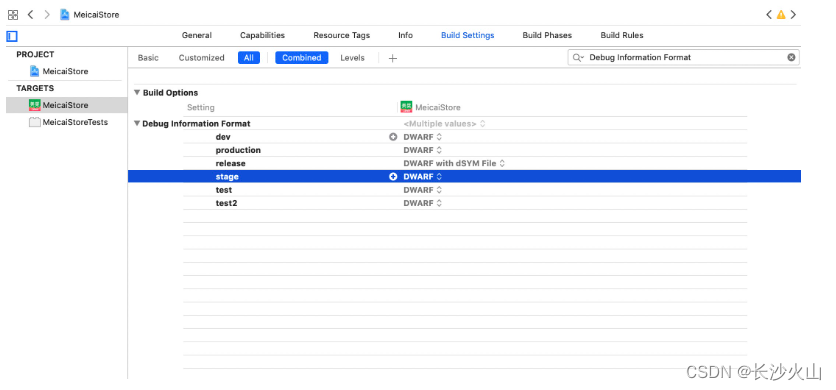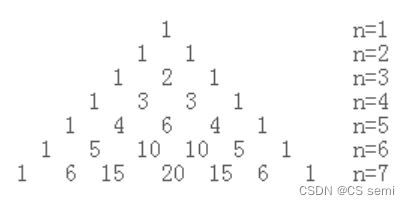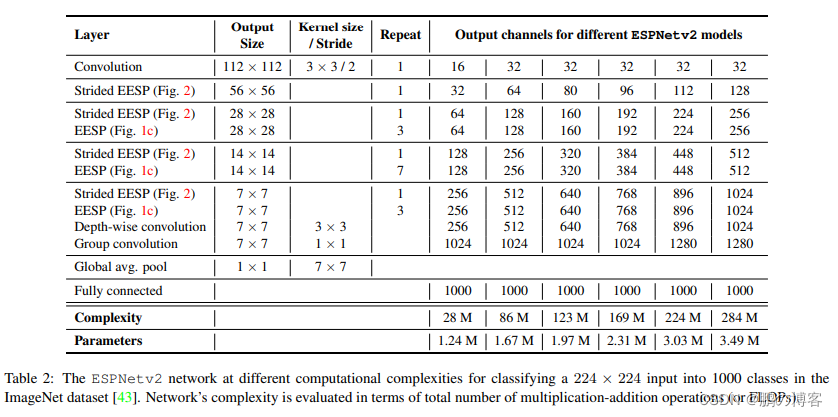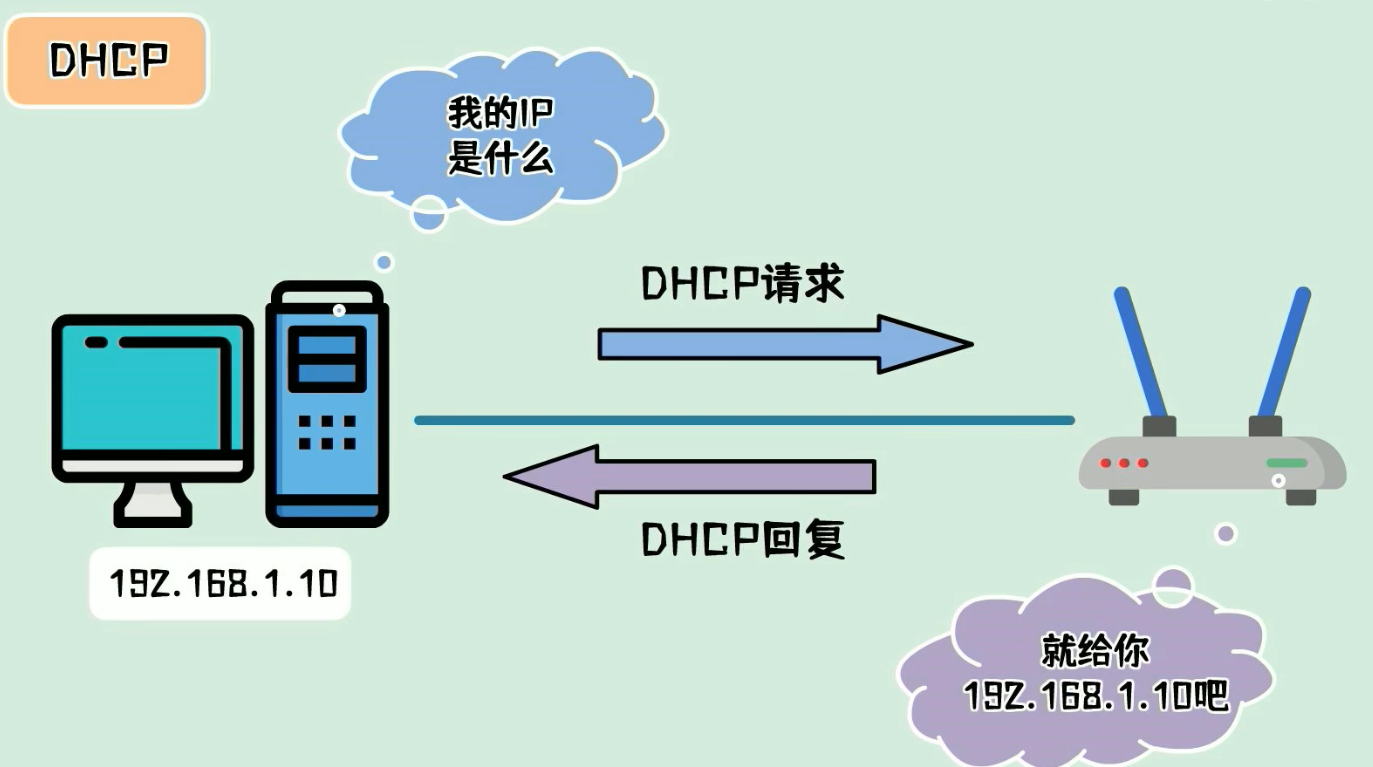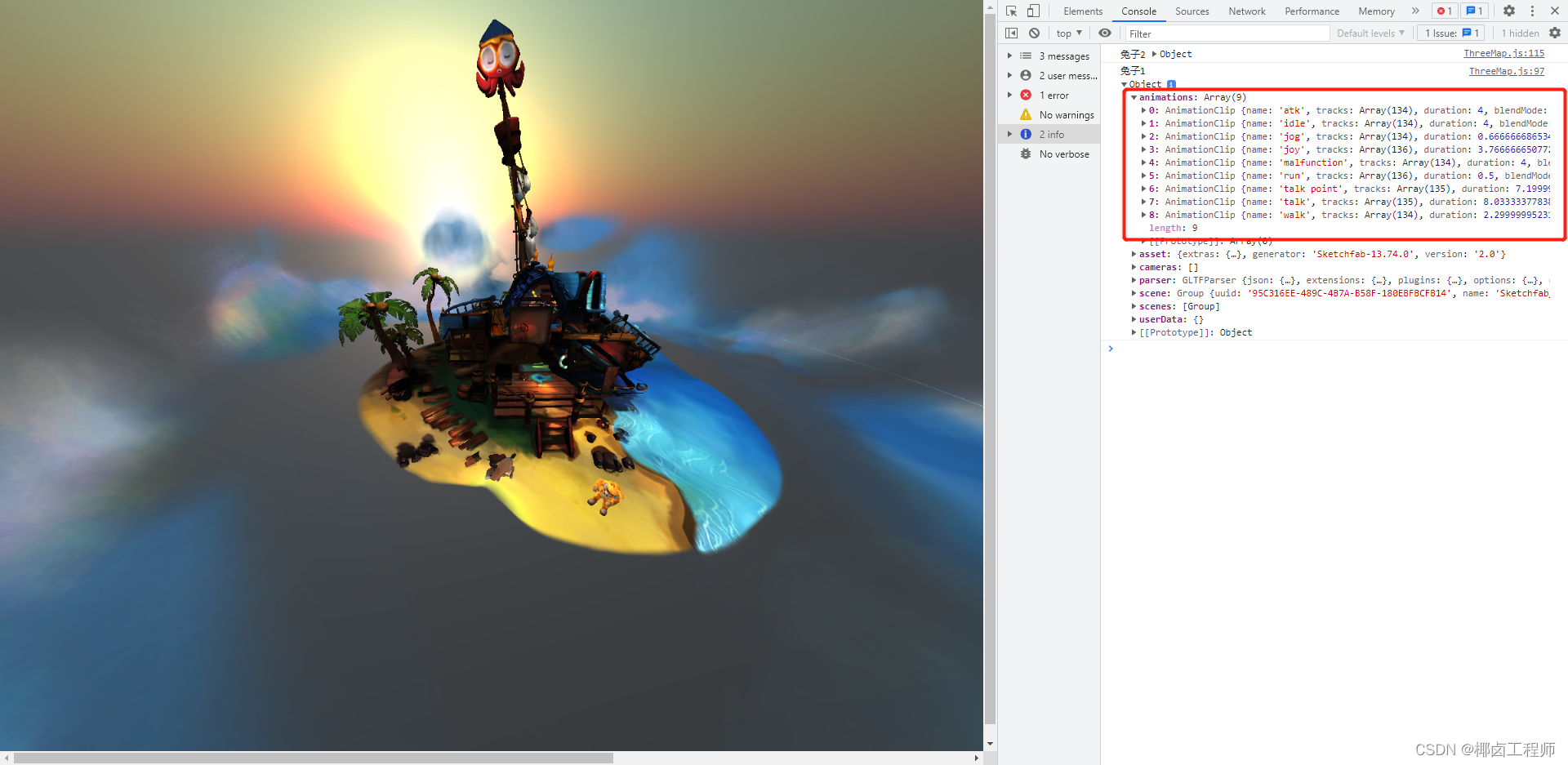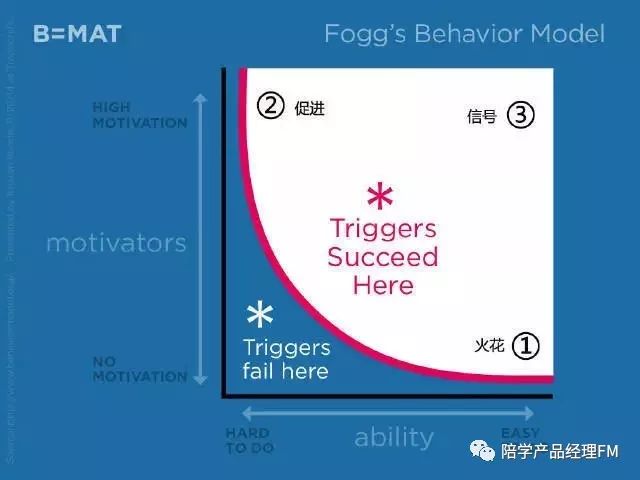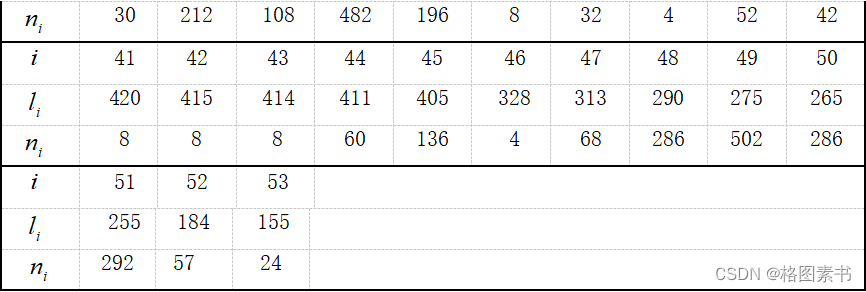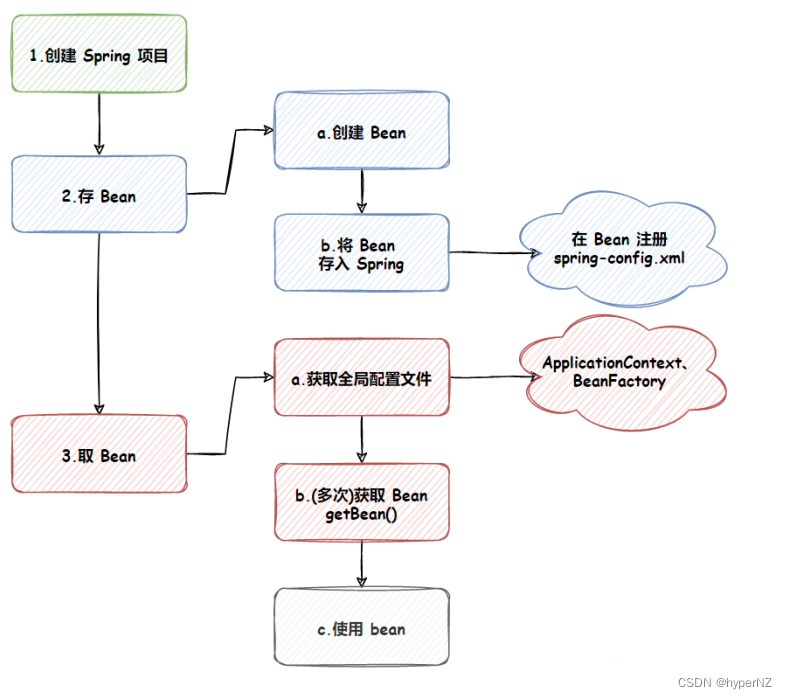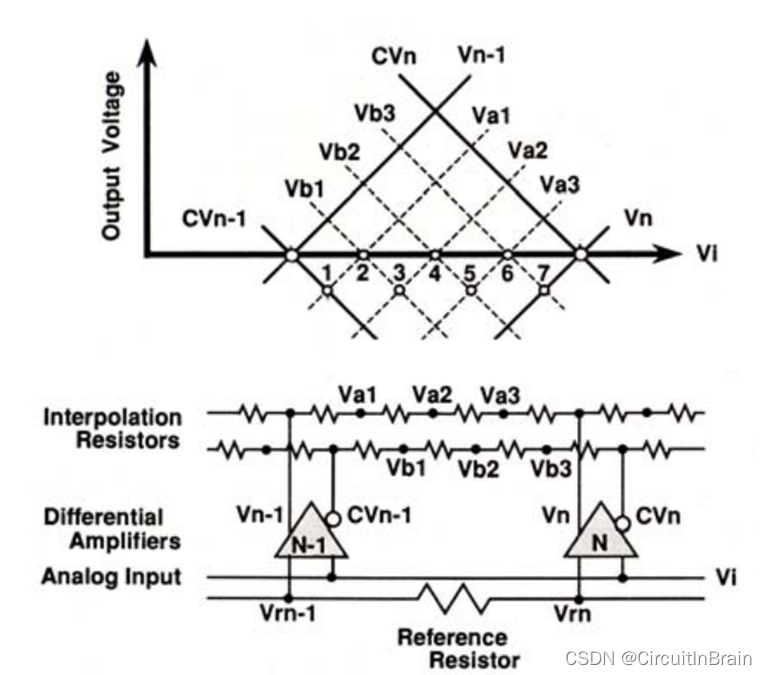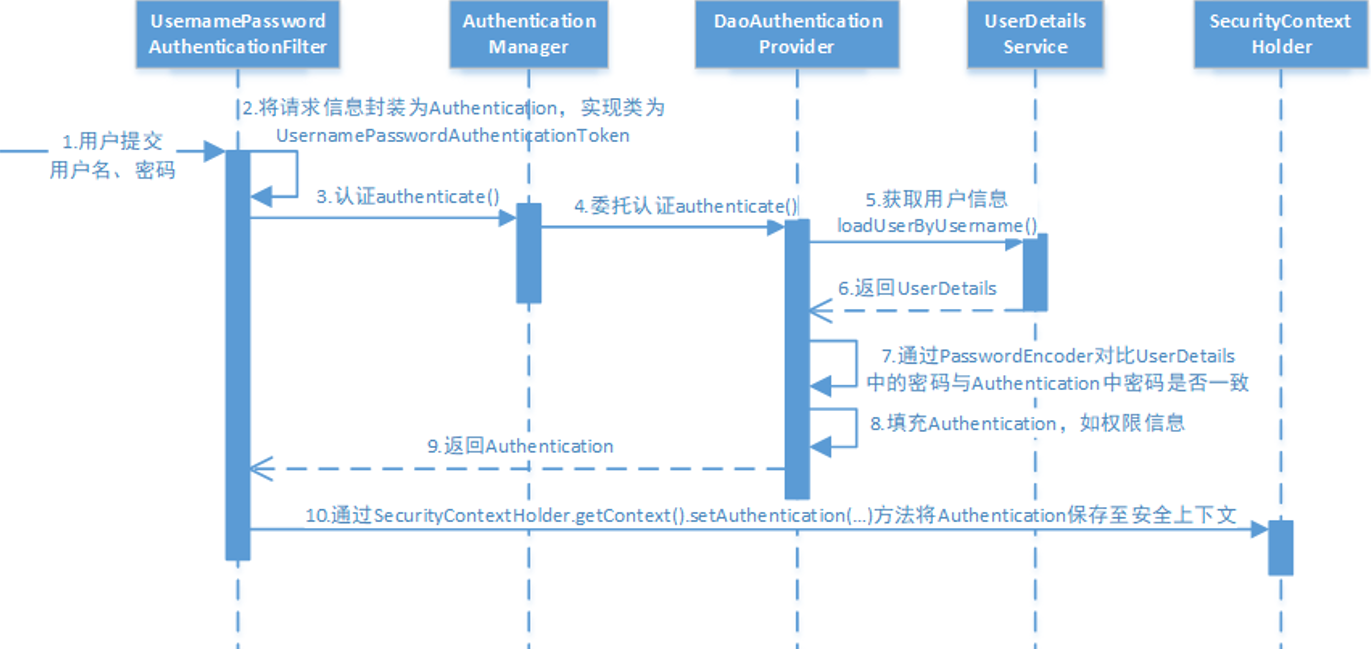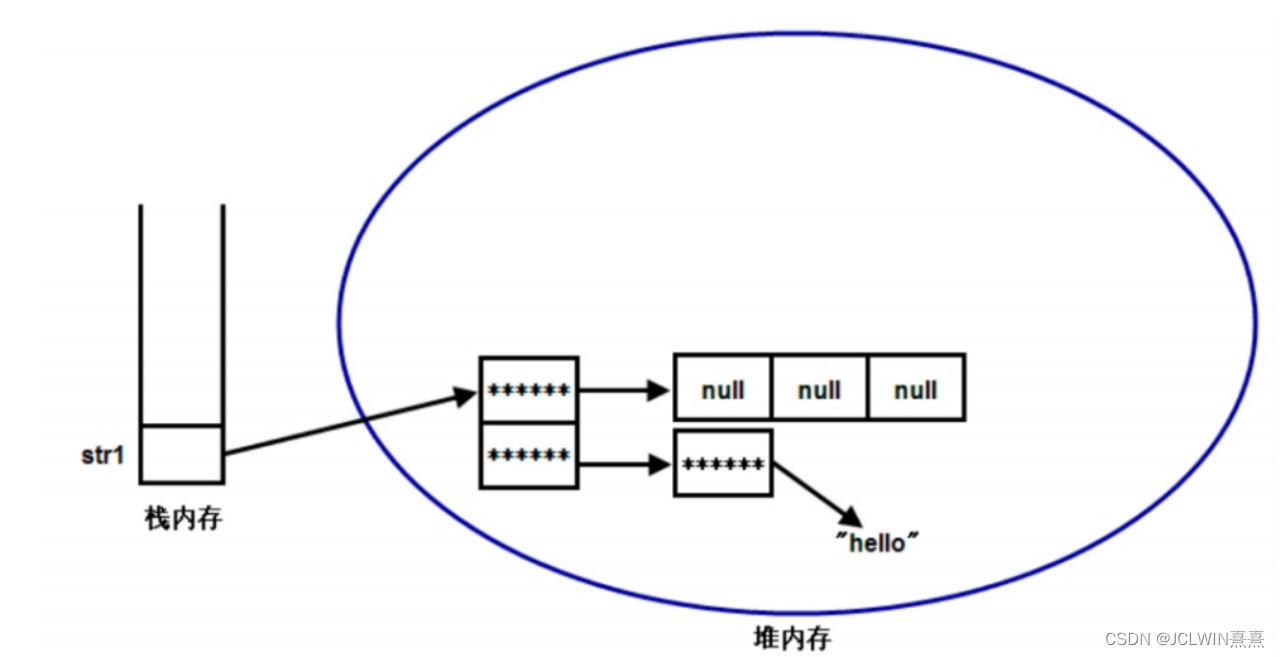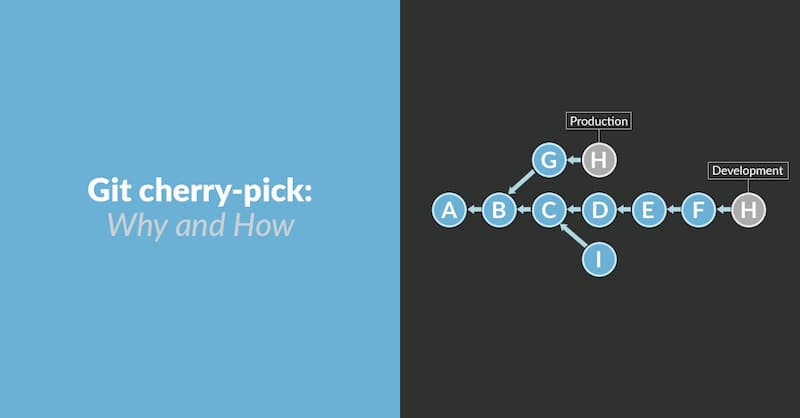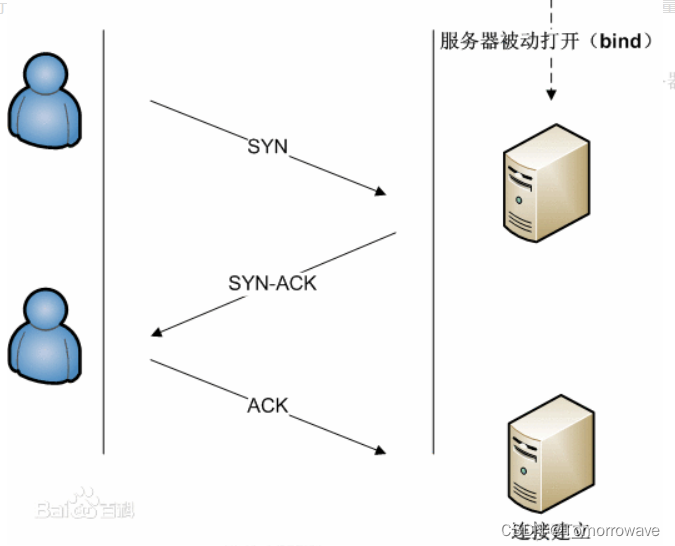文章导航
HashMap源码学习:红黑树原理详解
HashMap源码学习:JDK1.8版本源码解析
目录
- 文章导航
- 前言
- 正文
- HashMap重要属性
- HashMap构造方法
- HashMap扩容方法
- HashMap链表迁移
- HashMap红黑树迁移
- HashMap链表转红黑树
- HashMap红黑树转链表
- HashMap添加数据
- HashMap移除数据
- HashMap查询数据
- HashMap更新数据
- 总结
前言
上篇文章讲解了JDK1.8中HashMap红黑树的原理,以及节点插入、节点移除、红黑树平衡等代码流程,本篇文章对HashMap源码重点进行讲解。
正文
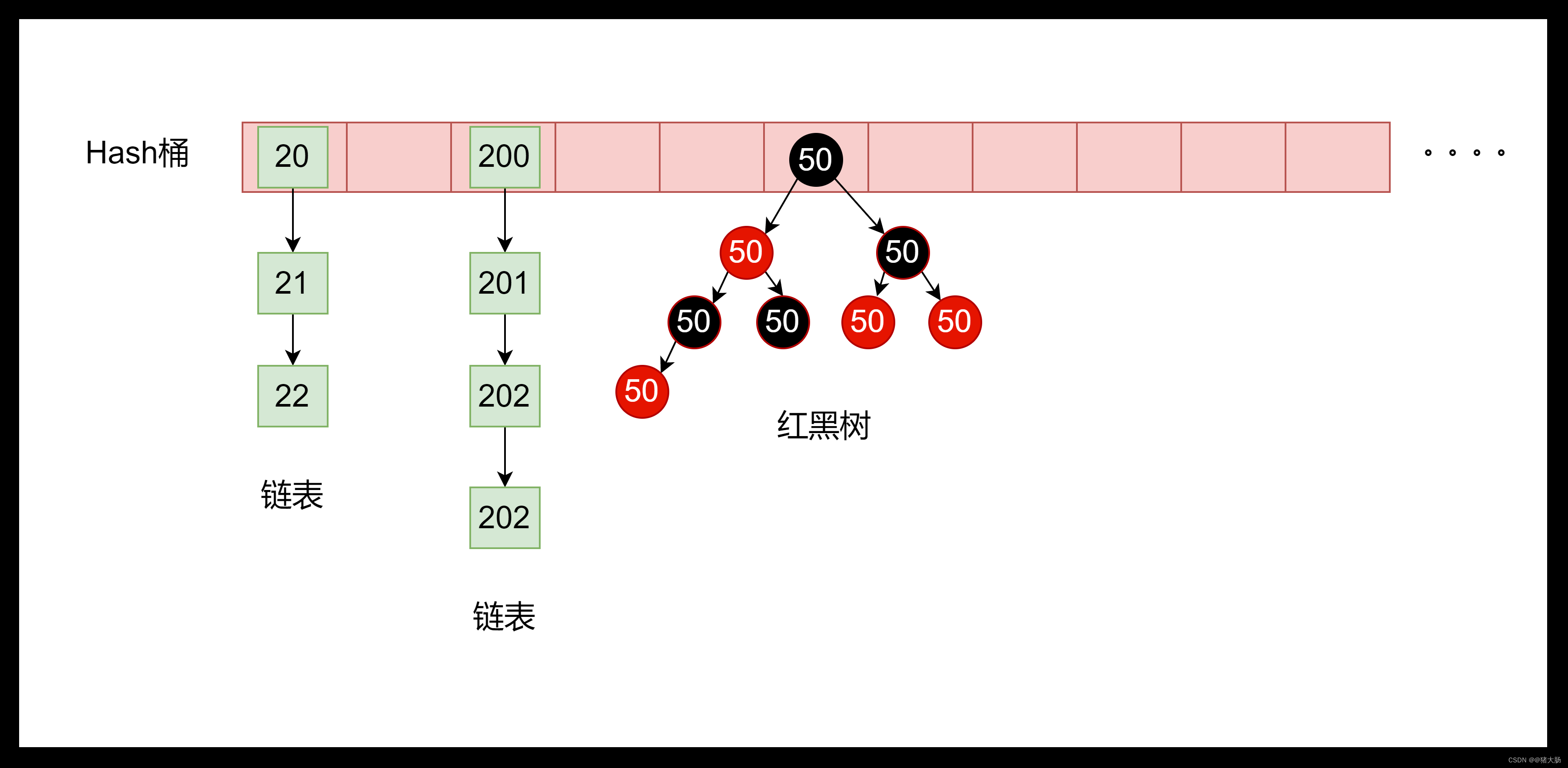
HashMap重要属性
//hash桶的初始容量,默认是16.当超过阈值时会进行2倍扩容
static final int DEFAULT_INITIAL_CAPACITY = 1 << 4; // aka 16
//最大hash桶容量,2的30次方
static final int MAXIMUM_CAPACITY = 1 << 30;
//加载因子,默认是0.75
static final float DEFAULT_LOAD_FACTOR = 0.75f;
//树化阈值,默认节点数大于等于8时,链表转红黑树
static final int TREEIFY_THRESHOLD = 8;
//链化阈值,默认节点数小于等于8时,红黑树转链表
static final int UNTREEIFY_THRESHOLD = 6;
//最小数化阈值,hash桶数必须大于等于64才能进行转红黑树
static final int MIN_TREEIFY_CAPACITY = 64;
//扩容阈值,threshold(阈值)=capacity(hash桶长度)*factor(加载因子)
int threshold;
//加载因子
int loadFactor;
HashMap构造方法
//使用无参构造器实例化时,此时的加载因子为默认值0.75,由于未计算值,此时扩容阈值threshold为0,此时hash桶还未被创建,此时为null
public HashMap() {
this.loadFactor = DEFAULT_LOAD_FACTOR; // all other fields defaulted
}
//自定义hash桶容量
public HashMap(int initialCapacity) {
//调用第三个构造器
this(initialCapacity, DEFAULT_LOAD_FACTOR);
}
//自定义hash桶容量何加载因子值
public HashMap(int initialCapacity, float loadFactor) {
if (initialCapacity < 0)
throw new IllegalArgumentException("Illegal initial capacity: " +
initialCapacity);
//当hash桶容量超过最大值,赋予最大默认值
if (initialCapacity > MAXIMUM_CAPACITY)
initialCapacity = MAXIMUM_CAPACITY;
if (loadFactor <= 0 || Float.isNaN(loadFactor))
throw new IllegalArgumentException("Illegal load factor: " +
loadFactor);
this.loadFactor = loadFactor;
//计算阈值大小,这里会计算出最接近2的整数幂值 如传入17,则会算出32;传入15,则会算出16;
this.threshold = tableSizeFor(initialCapacity);
}
这里先介绍构造器的原因是在扩容的时候,有好几种场景,如果先看构造器就会比较清晰。
HashMap扩容方法
final Node<K,V>[] resize() {
//获取旧hash桶
Node<K,V>[] oldTab = table;
//获取旧hash桶的容量,当第一次调用put方法时,此时旧hash桶为null,因为我们在构造函数中并没有看见hash桶的初始化
int oldCap = (oldTab == null) ? 0 : oldTab.length;
//获取旧扩容阈值,如果是调用有参构造器时,这里一定是有值的,否则为0;
int oldThr = threshold;
int newCap, newThr = 0;
//旧hash桶容量不为空,证明是需要扩容
if (oldCap > 0) {
//如果之前的hash桶容量大于最大值时,则赋予最大默认值并返回
if (oldCap >= MAXIMUM_CAPACITY) {
threshold = Integer.MAX_VALUE;
return oldTab;
}
//将hash桶进行扩容*2,并且判断是否处于默认值与最大默认值直接,满足条件时,对旧扩容阈值进行2倍扩容
else if ((newCap = oldCap << 1) < MAXIMUM_CAPACITY &&
oldCap >= DEFAULT_INITIAL_CAPACITY)
newThr = oldThr << 1; // double threshold
}
//能进入这个逻辑,证明旧的hash桶容量为0,即还未初始化中,此时如果是调用了有参构造器时,此时的旧扩容阈值是有值的,此时将新的hash桶容量大小=旧扩容阈值 标记:(1)
else if (oldThr > 0) // initial capacity was placed in threshold
newCap = oldThr;
else { // zero initial threshold signifies using defaults
//进入到这里,证明之前是调用了无参构造器,所以旧扩容阈值和hash桶容量才为0,此时赋予默认值
newCap = DEFAULT_INITIAL_CAPACITY;
newThr = (int)(DEFAULT_LOAD_FACTOR * DEFAULT_INITIAL_CAPACITY);
}
//进入这个逻辑证明之前是进入了 标记:(1)中的代码逻辑。此时重新计算新的扩容阈值
if (newThr == 0) {
float ft = (float)newCap * loadFactor;
newThr = (newCap < MAXIMUM_CAPACITY && ft < (float)MAXIMUM_CAPACITY ?
(int)ft : Integer.MAX_VALUE);
}
threshold = newThr;
@SuppressWarnings({"rawtypes","unchecked"})
//创建一个新的hash桶,此时的hash桶容量就是前面计算好的新容量大小。此时的hash桶是一个空的,需要将旧值迁移至此。
Node<K,V>[] newTab = (Node<K,V>[])new Node[newCap];
table = newTab;
if (oldTab != null) {
//遍历旧hash桶
for (int j = 0; j < oldCap; ++j) {
Node<K,V> e;
//获取hash桶中第一个节点,根据第一个节点去关联其它链表节点或红黑树节点。将节点赋值给e
if ((e = oldTab[j]) != null) {
//移除旧hash桶中该下标的节点
oldTab[j] = null;
//如果第一个节点关联的下个节点为空,证明只有一个节点,此时重新计算在新Hash桶中的位置进行存放
if (e.next == null)
newTab[e.hash & (newCap - 1)] = e;
else if (e instanceof TreeNode)
//如果是红黑树
((TreeNode<K,V>)e).split(this, newTab, j, oldCap);
else { // preserve order
//链表的迁移过程,见下文图解
Node<K,V> loHead = null, loTail = null;
Node<K,V> hiHead = null, hiTail = null;
Node<K,V> next;
//loHead :第一个节点,用于存放e.hash & oldCap=0情况的节点
//loHead :最后一个节点,用于存放e.hash & oldCap=0情况的节点
//hiHead :第一个节点,用于存放e.hash & oldCap!=0情况的节点
//hiTail :最后一个节点,用于存放e.hash & oldCap!=0情况的节点
//next:存放遍历当前节点的下一个节点
do {
next = e.next;
if ((e.hash & oldCap) == 0) {
if (loTail == null)
loHead = e;
else
loTail.next = e;
loTail = e;
}
else {
if (hiTail == null)
hiHead = e;
else
hiTail.next = e;
hiTail = e;
}
} while ((e = next) != null);
if (loTail != null) {
loTail.next = null;
newTab[j] = loHead;
}
if (hiTail != null) {
hiTail.next = null;
newTab[j + oldCap] = hiHead;
}
}
}
}
}
return newTab;
}
HashMap链表迁移
有读者可能对于链表的迁移过程不太理解,这边通过画图形式帮助理解。
对于(e.hash & oldCap) == 0)的情况:
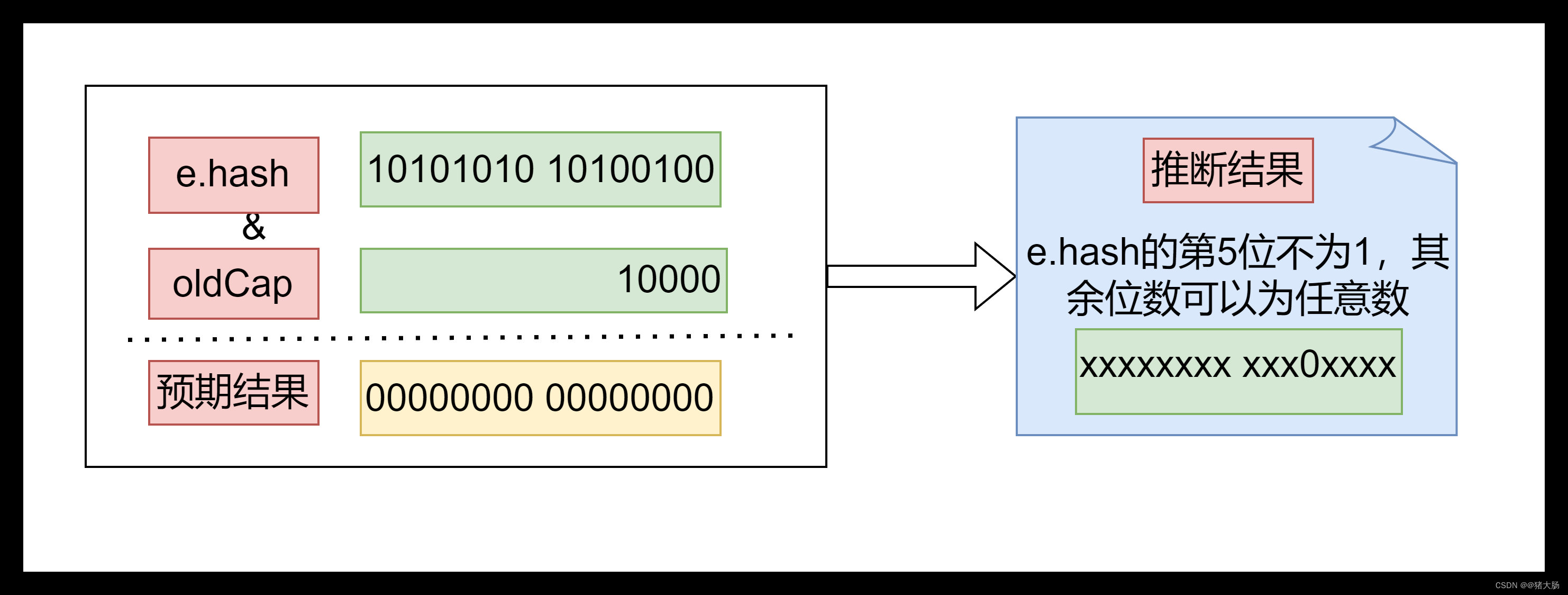 因为容量是2的整数幂,所以高位第一位为1,后面都是0;由于两者进行&运算后的结果为0 ,所以其与容量高位为1对应的hash位数一定是0,如上图中oldCap=16,e.hash的第5位一定为0,这样才能保证其&运算结果为0的情形。故我们可以推断出进入该代码逻辑的e.hash从右到左第5位为0,hash桶下标计算只受hash的后4位影响。
因为容量是2的整数幂,所以高位第一位为1,后面都是0;由于两者进行&运算后的结果为0 ,所以其与容量高位为1对应的hash位数一定是0,如上图中oldCap=16,e.hash的第5位一定为0,这样才能保证其&运算结果为0的情形。故我们可以推断出进入该代码逻辑的e.hash从右到左第5位为0,hash桶下标计算只受hash的后4位影响。
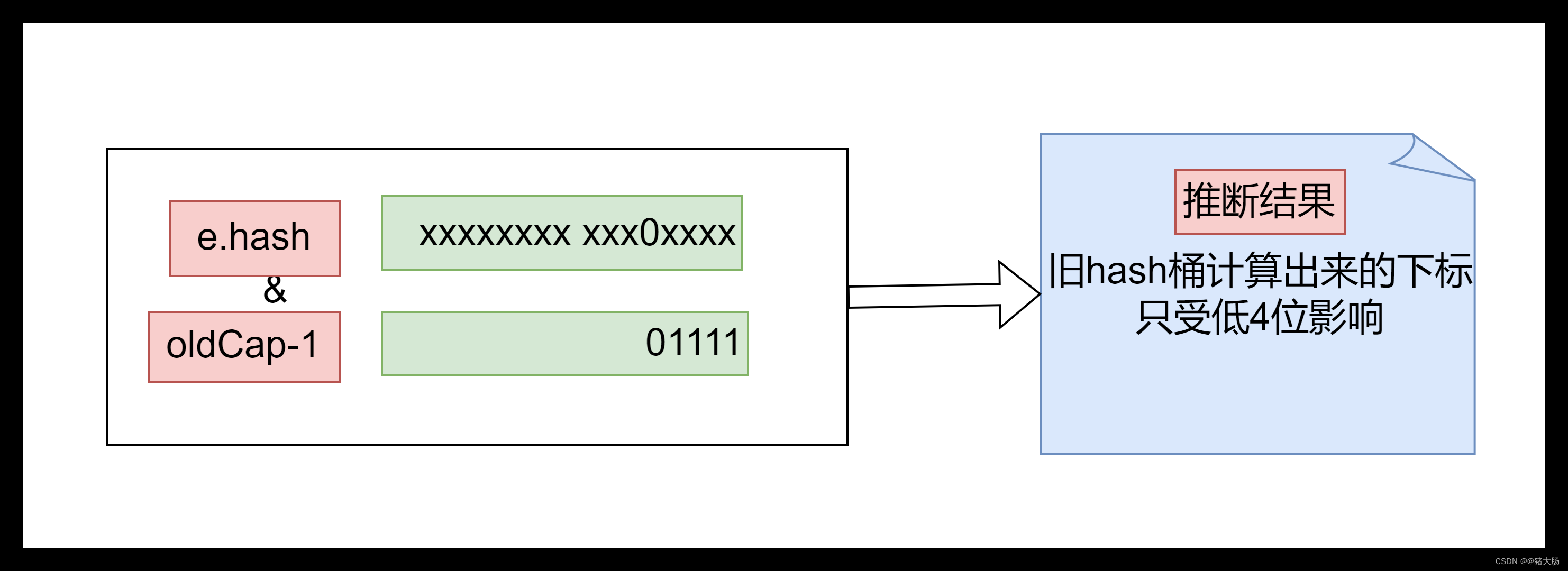
newCap新hash桶容量又是旧hash桶容量的两倍,所以在二进制中新hash桶容量比旧hash桶容量多一位。
下标计算公式:e.hash&hash桶容量值-1
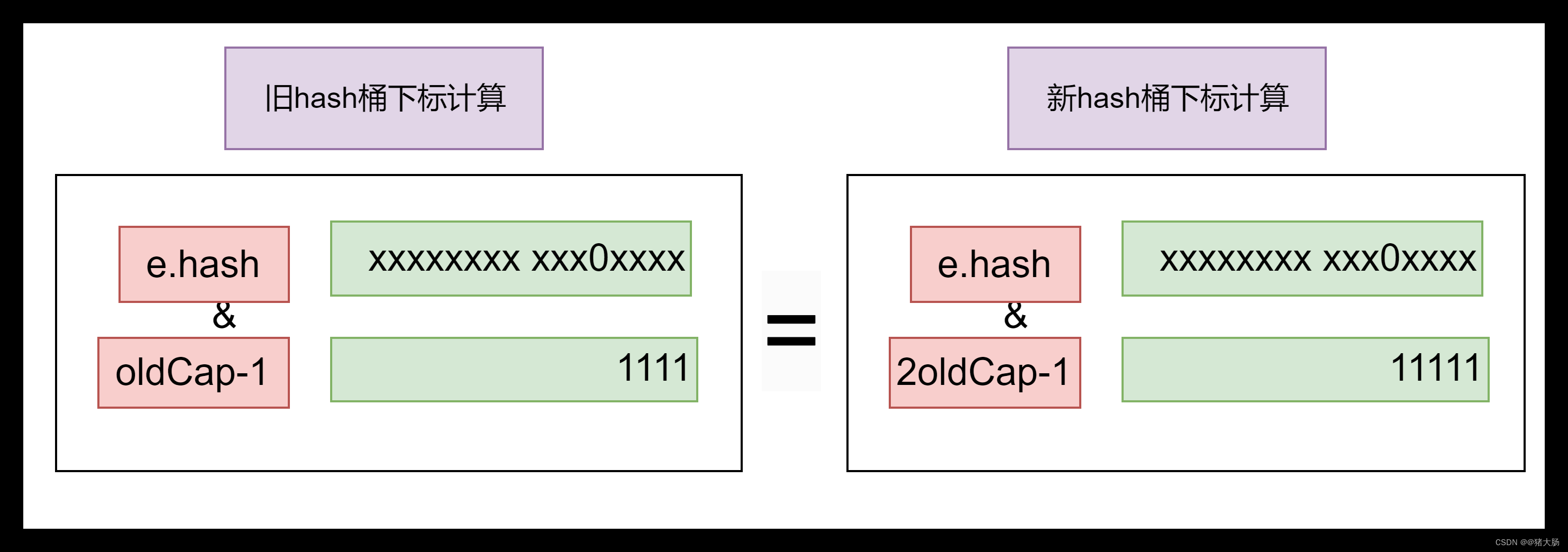 综上所述,我们可以总结出对于(e.hash & oldCap) == 0)的情况,节点在新旧hash桶中的位置是一样的。
综上所述,我们可以总结出对于(e.hash & oldCap) == 0)的情况,节点在新旧hash桶中的位置是一样的。
对于(e.hash & oldCap) != 0)的情况:
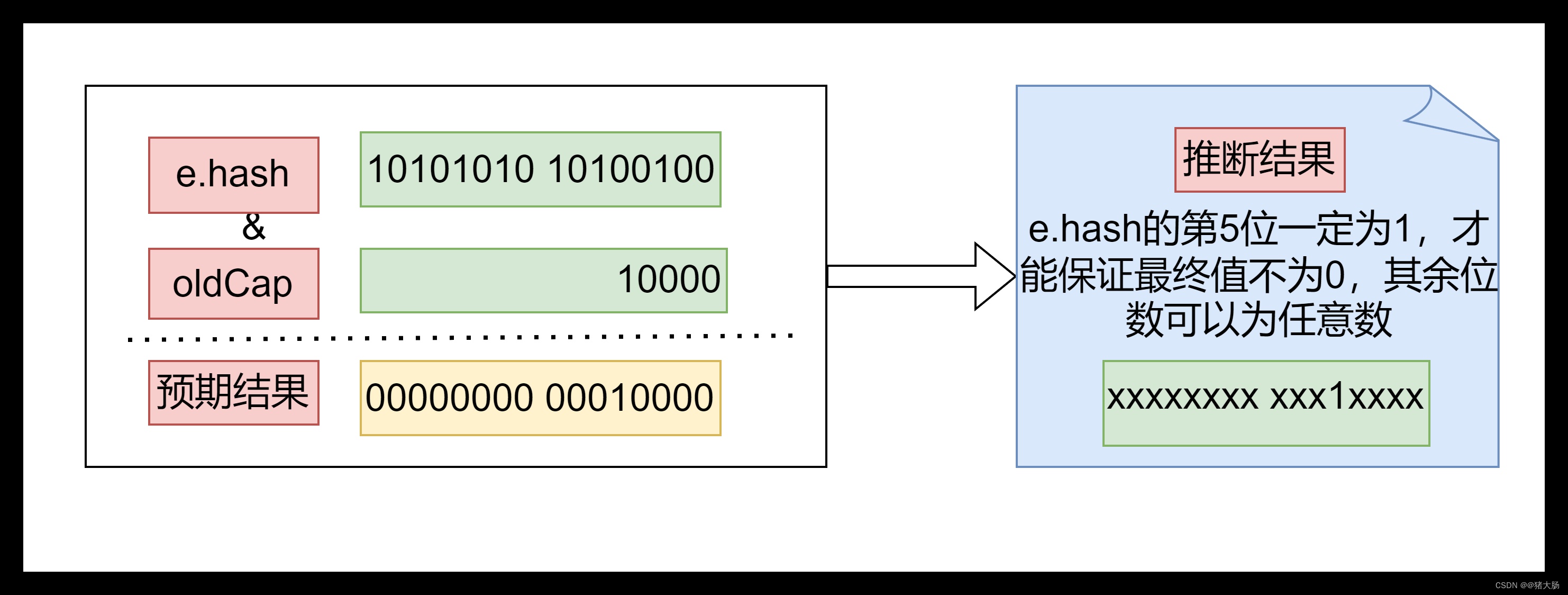
由于(e.hash & oldCap) != 0),所以我们可以得出二进制中与旧hash桶容量高位对应的hash一定是1,这样才能保证&运算后的结果不为0;根据上图案例,我们可以推断出进入该条件的节点hash值第5位一定是1;
 newCap新hash桶容量又是旧hash桶容量的两倍,所以在二进制中新hash桶容量比旧hash桶容量多一位。
newCap新hash桶容量又是旧hash桶容量的两倍,所以在二进制中新hash桶容量比旧hash桶容量多一位。
下标计算公式:e.hash&hash桶容量值-1
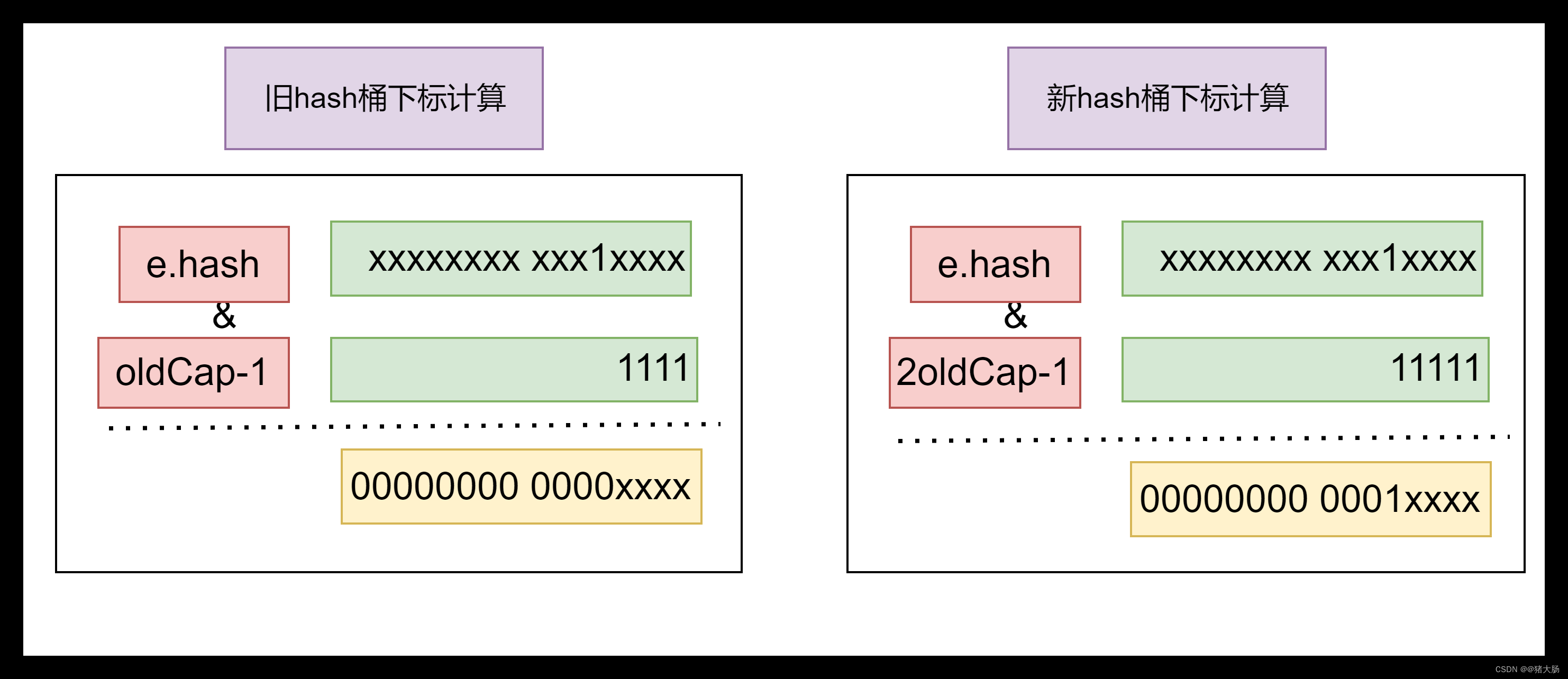
十进制:oldCap(16), oldCap-1(15), newCap=2oldCap=(32), newCap-1=(31)
二进制:oldCap(10000), oldCap-1(01111), newCap=2oldCap=(100000), newCap-1=(011111)
从上图中,我们可以看出新hash桶计算出来的下标恰好比旧hash桶下标多出一位,且多出的高位为1;
最终我们得出结论:对于(e.hash & oldCap) != 0)的情况,新hash桶的下标=旧hash桶下标+旧hash桶的容量
HashMap红黑树迁移
红黑树迁移到新hash桶下标的计算与上文链表迁移的计算方式一致;
final void split(HashMap<K,V> map, Node<K,V>[] tab, int index, int bit) {
//当前hash桶所在下标的第一个节点
TreeNode<K,V> b = this;
// Relink into lo and hi lists, preserving order
TreeNode<K,V> loHead = null, loTail = null;
TreeNode<K,V> hiHead = null, hiTail = null;
//loHead :第一个节点,用于存放e.hash & oldCap=0情况的节点
//loHead :最后一个节点,用于存放e.hash & oldCap=0情况的节点
//hiHead :第一个节点,用于存放e.hash & oldCap!=0情况的节点
//hiTail :最后一个节点,用于存放e.hash & oldCap!=0情况的节点
//统计两种情况的数量
int lc = 0, hc = 0;
//先使用链表的方式,将同个下标中的节点串起来,后面再进行红黑树转换
for (TreeNode<K,V> e = b, next; e != null; e = next) {
next = (TreeNode<K,V>)e.next;
e.next = null;
if ((e.hash & bit) == 0) {
if ((e.prev = loTail) == null)
loHead = e;
else
loTail.next = e;
loTail = e;
++lc;
}
else {
if ((e.prev = hiTail) == null)
hiHead = e;
else
hiTail.next = e;
hiTail = e;
++hc;
}
}
if (loHead != null) {
//如果分割后节点数小于等于6,则进行链表化
if (lc <= UNTREEIFY_THRESHOLD)
tab[index] = loHead.untreeify(map);
else {
tab[index] = loHead;
//hiHead 和 loHead都有值,证明分割成了两个链表,此时需要重新进行树化平衡
if (hiHead != null) // (else is already treeified)
loHead.treeify(tab);
}
}
//这里的逻辑跟上面一样;
if (hiHead != null) {
if (hc <= UNTREEIFY_THRESHOLD)
tab[index + bit] = hiHead.untreeify(map);
else {
tab[index + bit] = hiHead;
if (loHead != null)
hiHead.treeify(tab);
}
}
}
上面方法操作的是红黑树,有读者可能有疑问,既然操作的是红黑树这么还有next属性。引入这些属性是方便树化和链化的转换。可以看下红黑树节点的属性结构:
static final class TreeNode<K,V> extends LinkedHashMap.Entry<K,V> {
TreeNode<K,V> parent; // 红黑树的父节点
TreeNode<K,V> left; // 红黑树的左节点
TreeNode<K,V> right; // 红黑树的右节点
TreeNode<K,V> prev; // 指向链表的上个节点
boolean red;
以上代码我们并没用看到next属性,但是可以看到其继承了LinkedHashMap…Entry<K,V>父类,而LinkedHashMap…Entry<K,V>继承了Node<K,V>,所以红黑树也就拥有了next属性。
HashMap链表转红黑树
对于红黑树不熟悉的,可参考上篇文章《HashMap源码学习:红黑树原理详解》
final void treeify(Node<K,V>[] tab) {
TreeNode<K,V> root = null;
for (TreeNode<K,V> x = this, next; x != null; x = next) {
//获取当前节点的下一个节点
next = (TreeNode<K,V>)x.next;
x.left = x.right = null;
//如果当前红黑树根节点为空时,将其作为根节点,并且将颜色置为黑色
if (root == null) {
x.parent = null;
x.red = false;
root = x;
}
else {
//获取插入节点key值
K k = x.key;
//获取插入节点hash值
int h = x.hash;
Class<?> kc = null;
//从跟节点开始遍历
for (TreeNode<K,V> p = root;;) {
int dir, ph;
//dir:标记下个节点的方向
//ph:当前节点的Hash值
//pk:当前节点的key值
K pk = p.key;
//如果当前插入节点hash值小于当前节点的hash值,则下次查找应该是向左查找
if ((ph = p.hash) > h)
dir = -1;
//如果当前插入节点hash值大于当前节点的hash值,则下次查找应该是向右查找
else if (ph < h)
dir = 1;
//这里去获取key是否实现一些比较器,有则使用比较器来获取下次查询的方向
else if ((kc == null &&
(kc = comparableClassFor(k)) == null) ||
(dir = compareComparables(kc, k, pk)) == 0)
//尝试使用jdk自带的hash工具进行比较
dir = tieBreakOrder(k, pk);
//将红黑树当前所在节点赋值给xp
TreeNode<K,V> xp = p;
//将p赋值为下个节点,如果下个节点为null,证明是找到插入位置了
if ((p = (dir <= 0) ? p.left : p.right) == null) {
//将插入节点的父亲指向xp
x.parent = xp;
//这里根据方向决定是插入左边还是右边
if (dir <= 0)
xp.left = x;
else
xp.right = x;
//插入之后,可能会破坏红黑树的特性,需要进行平衡操作,如变色、左旋、右旋。可参考上篇文章
root = balanceInsertion(root, x);
break;
}
}
}
}
//保持根节点位于hash桶中所在下标的第一个节点
moveRootToFront(tab, root);
}
HashMap红黑树转链表
final Node<K,V> untreeify(HashMap<K,V> map) {
Node<K,V> hd = null, tl = null;
for (Node<K,V> q = this; q != null; q = q.next) {
//创建新的节点
Node<K,V> p = map.replacementNode(q, null);
//tl为空,证明是第一次遍历时
if (tl == null)
//将当前新节点设置为头节点
hd = p;
else
tl.next = p;
tl = p;
}
return hd;
}
HashMap添加数据
public V put(K key, V value) {
return putVal(hash(key), key, value, false, true);
}
final V putVal(int hash, K key, V value, boolean onlyIfAbsent,
boolean evict) {
Node<K,V>[] tab; Node<K,V> p; int n, i;
//如果hash桶为null或者长度为0,这时候需要调用resize方法进行初始化。
if ((tab = table) == null || (n = tab.length) == 0)
n = (tab = resize()).length;
//计算插入节点在hash桶中的下标,该下标如果为空,则直接存入
if ((p = tab[i = (n - 1) & hash]) == null)
tab[i] = newNode(hash, key, value, null);
else {
//e用来保存存在相同hash值跟key值的节点,后面会进行值覆盖
Node<K,V> e; K k;
//如果当前hash桶所在下标有值,其hash值跟key值与插入节点一致,则将值赋值给e,在后面的步骤会进行值覆盖
if (p.hash == hash &&
((k = p.key) == key || (key != null && key.equals(k))))
e = p;
else if (p instanceof TreeNode)
//插入节点是一个红黑树节点,此处返回的e不为空,证明存在相同key值跟hash值的情况。该方法在上篇文章中已进行讲解
e = ((TreeNode<K,V>)p).putTreeVal(this, tab, hash, key, value);
else {
//这里一直遍历获取下个节点,判断是否存在相同key值跟hash值的情况,有则赋值给e至后面覆盖;如果下个节点为空,则进行插入
for (int binCount = 0; ; ++binCount) {
if ((e = p.next) == null) {
p.next = newNode(hash, key, value, null);
//当节点数量大于等于8个事,进行链表转红黑树
if (binCount >= TREEIFY_THRESHOLD - 1) // -1 for 1st
treeifyBin(tab, hash);
break;
}
if (e.hash == hash &&
((k = e.key) == key || (key != null && key.equals(k))))
break;
p = e;
}
}
//如果e不为空,则已存在该相同key情况的节点,需要将value值赋予新值
if (e != null) { // existing mapping for key
V oldValue = e.value;
if (!onlyIfAbsent || oldValue == null)
e.value = value;
//值覆盖完成后进行回调。该方法为拓展方法,留于子类进行拓展实现;HashMap中没有进行代码实现。
afterNodeAccess(e);
return oldValue;
}
}
++modCount;
//如果当前hash桶存储容量大于阈值时,进行扩容
if (++size > threshold)
resize();
//该方法为拓展方法,留于子类进行拓展实现;HashMap中没有进行代码实现。
afterNodeInsertion(evict);
return null;
}
HashMap移除数据
public boolean remove(Object key, Object value) {
return removeNode(hash(key), key, value, true, true) != null;
}
final Node<K,V> removeNode(int hash, Object key, Object value,
boolean matchValue, boolean movable) {
Node<K,V>[] tab; Node<K,V> p; int n, index;
//如果hash桶为null、数量为0、计算后hash桶所在下标为null时,证明没数据存在。直接返回null
if ((tab = table) != null && (n = tab.length) > 0 &&
(p = tab[index = (n - 1) & hash]) != null) {
Node<K,V> node = null, e; K k; V v;
//如果其hash值、key值一致,则是查找到了,将其赋值给node,后面代码中会进行移除
if (p.hash == hash &&
((k = p.key) == key || (key != null && key.equals(k))))
node = p;
else if ((e = p.next) != null) {
//如果查找节点是一个红黑树节点,则调用红黑树方法进行查找。上篇文章中已对该方法进行讲解
if (p instanceof TreeNode)
node = ((TreeNode<K,V>)p).getTreeNode(hash, key);
else {
//一致遍历查找,直到最后一个值,看是否查询到,查询到则赋值给node
do {
if (e.hash == hash &&
((k = e.key) == key ||
(key != null && key.equals(k)))) {
node = e;
break;
}
p = e;
} while ((e = e.next) != null);
}
}
//如果找到了位置,还需要比较移除值是否一样(取决于开关:matchValue 值)。
if (node != null && (!matchValue || (v = node.value) == value ||
(value != null && value.equals(v)))) {
if (node instanceof TreeNode)
((TreeNode<K,V>)node).removeTreeNode(this, tab, movable);
else if (node == p)
//如果移除节点是处于hash桶下标第一个时,将hash桶下标中的值移动到移除节点的下一个值
tab[index] = node.next;
else
//将上个节点的next指向移除节点的next节点
p.next = node.next;
++modCount;
--size;
//回调函数,留于子类进行实现
afterNodeRemoval(node);
return node;
}
}
return null;
}
HashMap查询数据
public V get(Object key) {
Node<K,V> e;
return (e = getNode(hash(key), key)) == null ? null : e.value;
}
final Node<K,V> getNode(int hash, Object key) {
Node<K,V>[] tab; Node<K,V> first, e; int n; K k;
//如果hash桶为null、数量为0、计算后hash桶所在下标为null时,证明没数据存在。直接返回null
if ((tab = table) != null && (n = tab.length) > 0 &&
(first = tab[(n - 1) & hash]) != null) {
//如果第一个节点的key跟hash值一致则返回
if (first.hash == hash && // always check first node
((k = first.key) == key || (key != null && key.equals(k))))
return first;
if ((e = first.next) != null) {
//如果是红黑树,则调用红黑树方法查找
if (first instanceof TreeNode)
return ((TreeNode<K,V>)first).getTreeNode(hash, key);
do {
//一致遍历链表进行查找
if (e.hash == hash &&
((k = e.key) == key || (key != null && key.equals(k))))
return e;
} while ((e = e.next) != null);
}
}
return null;
}
HashMap更新数据
@Override
public V replace(K key, V value) {
Node<K,V> e;
if ((e = getNode(hash(key), key)) != null) {
V oldValue = e.value;
e.value = value;
afterNodeAccess(e);
return oldValue;
}
return null;
}
总结
看完HashMap源码可以看到其设计很巧妙,尤其是下标计算、新旧Hash桶的迁移。
旧Hash桶迁移到新Hash桶时,其下标只有两种情况;一种是新旧位置一样的情形,一种是新Hash桶位置=旧Hash桶容量长度+旧Hash桶所在下标;
